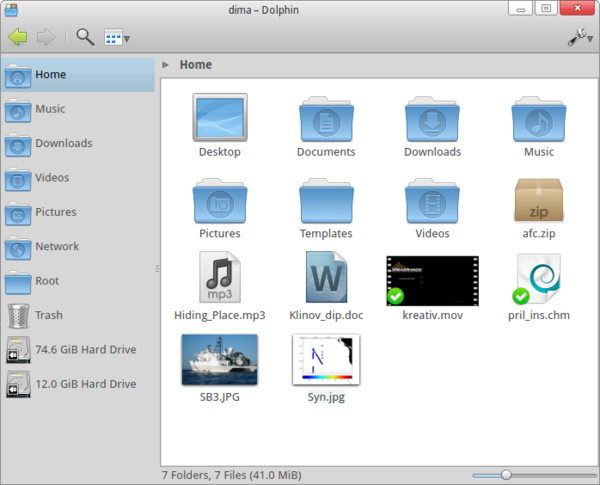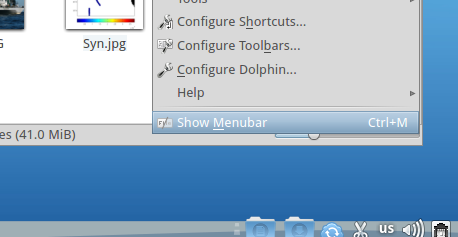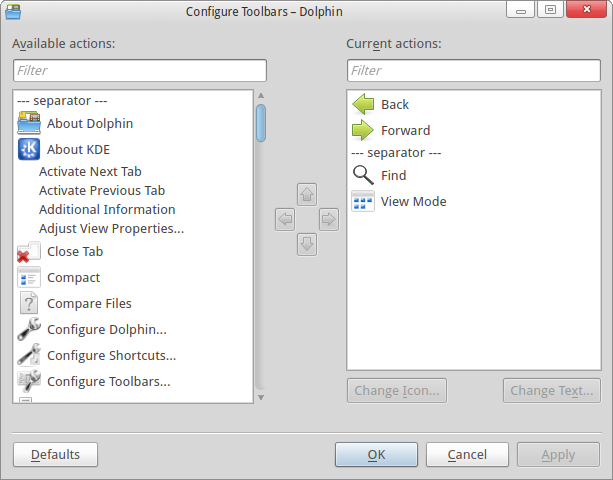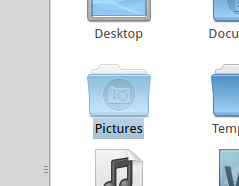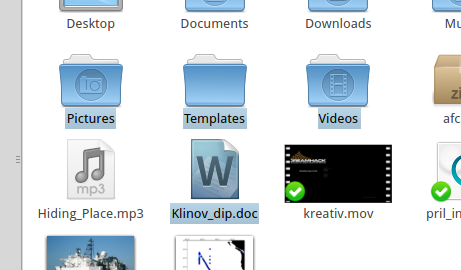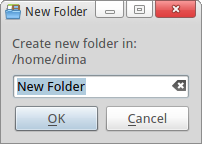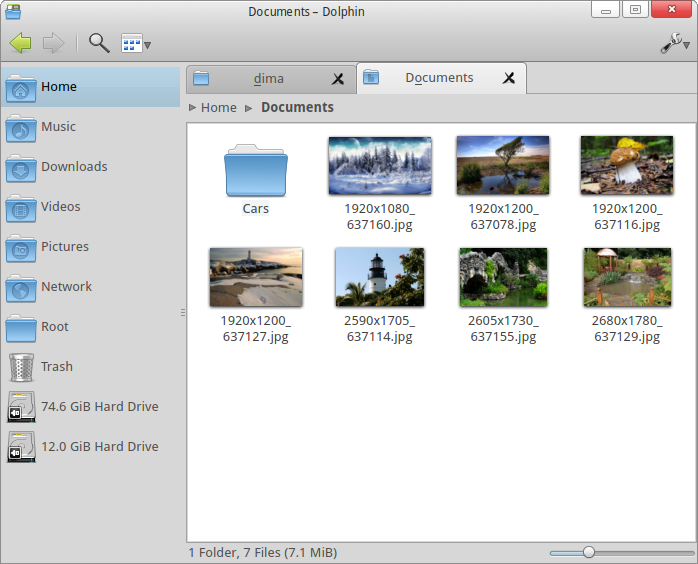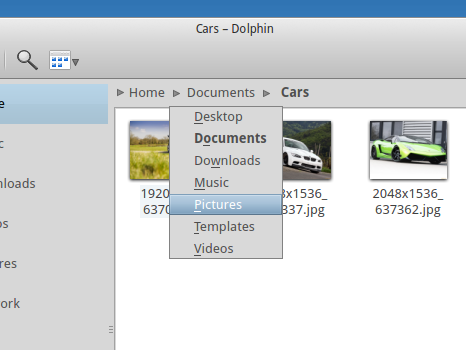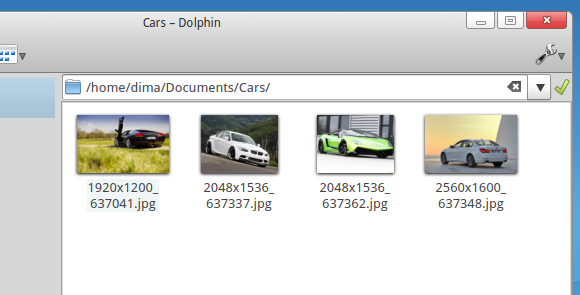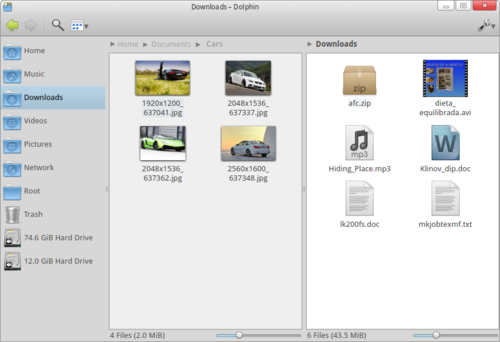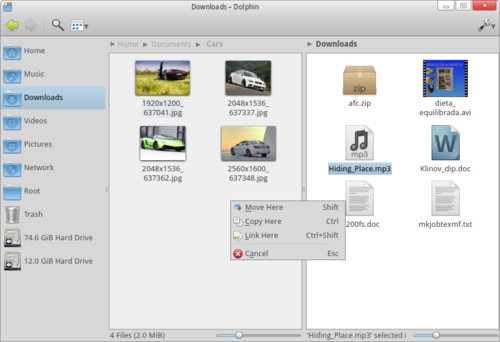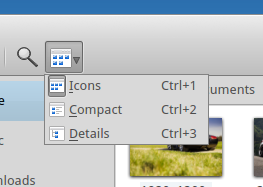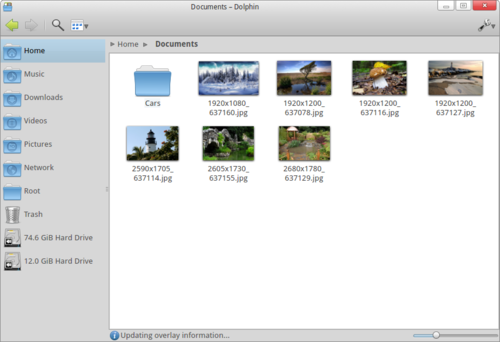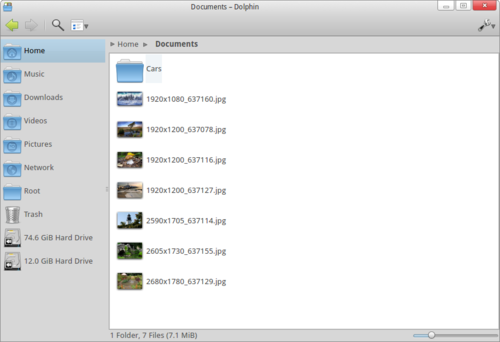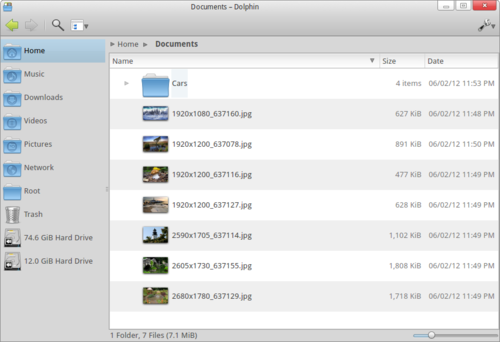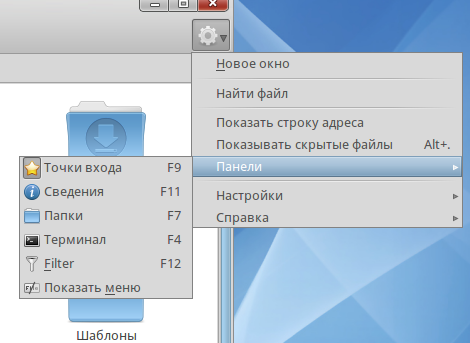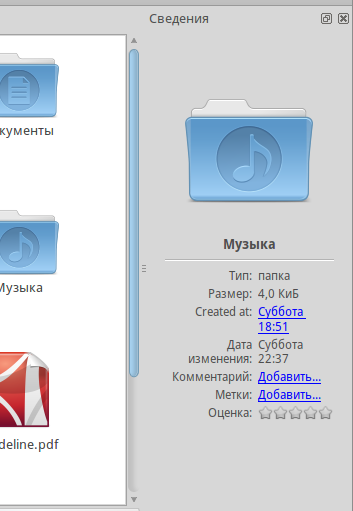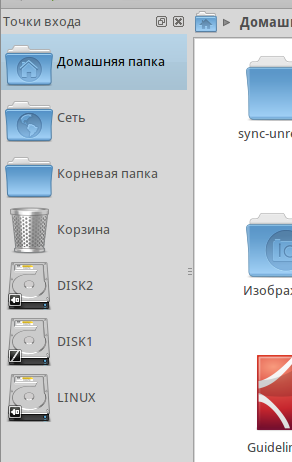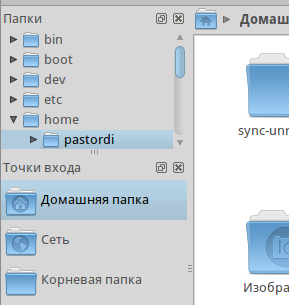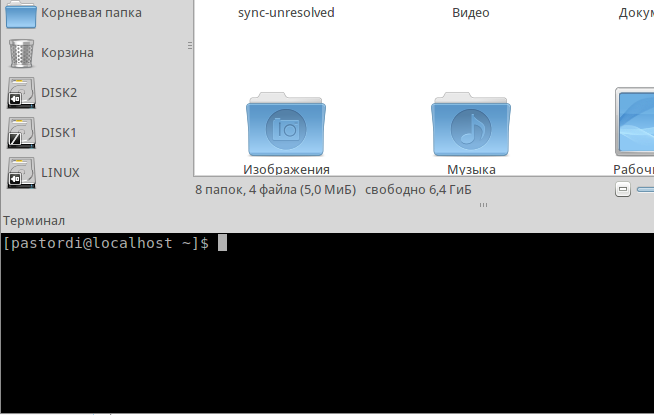Difference between revisions of "How to work in Dolphin"
(→Dual-pane view) |
(→View modes) |
||
| Line 49: | Line 49: | ||
= View modes = | = View modes = | ||
| − | 1. Dolphin has several view modes: '''Icons''', '''Compact''', '''Details'''. Particular mode can be activated wither using corresponding toolbar icon or using hotkey combinations '''Ctrl'''+'''1''', '''Ctrl'''+'''2''', '''Ctrl'''+'''3'''. [[File:Dolphin-view1.png|center]] | + | 1. Dolphin has several view modes: '''Icons''', '''Compact''', '''Details'''. Particular mode can be activated wither using corresponding toolbar icon or using hotkey combinations '''Ctrl'''+'''1''', '''Ctrl'''+'''2''', '''Ctrl'''+'''3'''. [[File:Dolphin-view1-en.png|center]] |
| − | 2. '''Icons''' view mode; to activate it, press '''Ctrl'''+'''1''' (this mode is used by default). [[File:Dolphin-view2.png|500px|center]] | + | 2. '''Icons''' view mode; to activate it, press '''Ctrl'''+'''1''' (this mode is used by default). [[File:Dolphin-view2-en.png|500px|center]] |
| − | 3. '''Compact''' view mode; to activate it, press '''Ctrl'''+'''2'''. [[File:Dolphin-view3.png|500px|center]] | + | 3. '''Compact''' view mode; to activate it, press '''Ctrl'''+'''2'''. [[File:Dolphin-view3-en.png|500px|center]] |
| − | 4. '''Details''' view mode; to activate it, press '''Ctrl'''+'''3'''. Note that consequent windows '''do not replace''' the view from the previous windows, but shows '''subfolders''' of every folder opened in the current window. [[File:Dolphin-view4.png|500px|center]] | + | 4. '''Details''' view mode; to activate it, press '''Ctrl'''+'''3'''. Note that consequent windows '''do not replace''' the view from the previous windows, but shows '''subfolders''' of every folder opened in the current window. [[File:Dolphin-view4-en.png|500px|center]] |
= Panels = | = Panels = | ||
Revision as of 23:42, 2 June 2012
Dolphin is a KDE file manager.
Getting started with Dolphin
When you launch Dolphin, it opens your Home folder.
If you need to add something to toolbar, then select necessary item at the right side (Available actions) and click on the Right arrow to move it to the right side, Current actions.
If you need to remove some action, do exactly the opposite - move it from the right side to the left.
2. To launch a file or open a folder, click twice on it by the left mouse button.
3. To select a single file or a single folder, just click on it using the left mouse button. Selected file or folder will be highlighted with a blue square. 4. To select several files or folders at once, press the Ctrl key and while holding it click by the left mouse button on necessary files and folders.5. To remove selection from a file or folder but leave other files or folders selected, click by the left mouse button on selected file or folder holding the Ctrl key. The blue square will disappear from that file.
6. To select all files and folders in the opened folder, press Ctrl+A.
7. To create a new folder inside the active one, press F10. A window will appear where you can enter the name of a new folder. 8. Dolphin supports tabbed view. To create a new tab, press Ctrl+T. Multiple tabs are allowed, just press that key combination to create one more tab.9. To close active tab, press Ctrl+W.
1. Dolphin uses a new concept of navigation bar. It doesn't display folder path as a single string, but shows a chain of folder names. Every name is clickable and opens corresponding folder.
2. Between folder names represented as buttons, an arrow button exists which is also a button. If you click on it, you will see all subfolders located at the same level as the current one and quickly change directory to one of them.
3. You can also use classical navigation bar that display the whole folder path. You can turn on classical view for the bar by pressing Ctrl+L. To switch back from the classical view, press that key combination again.